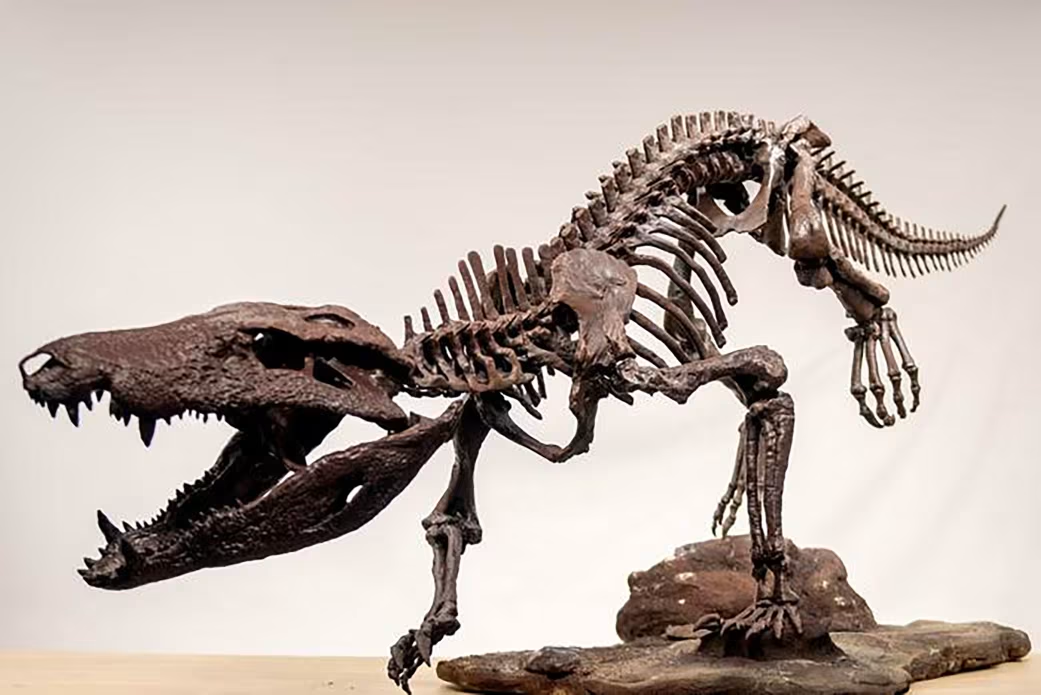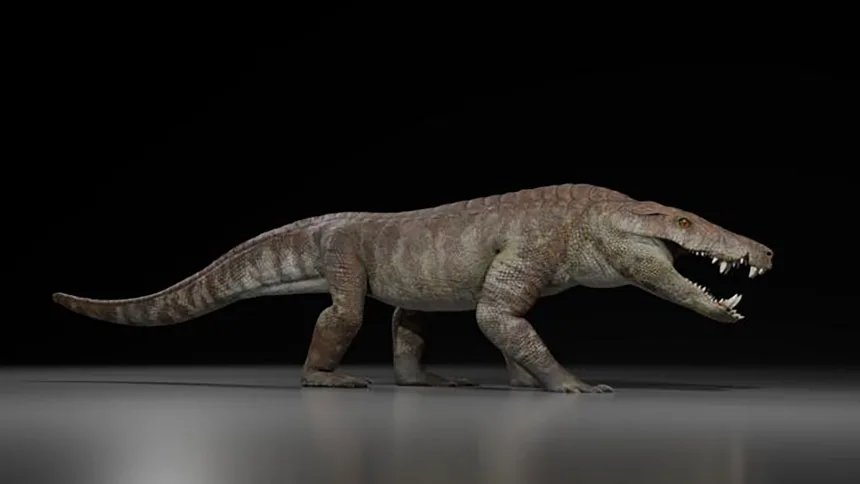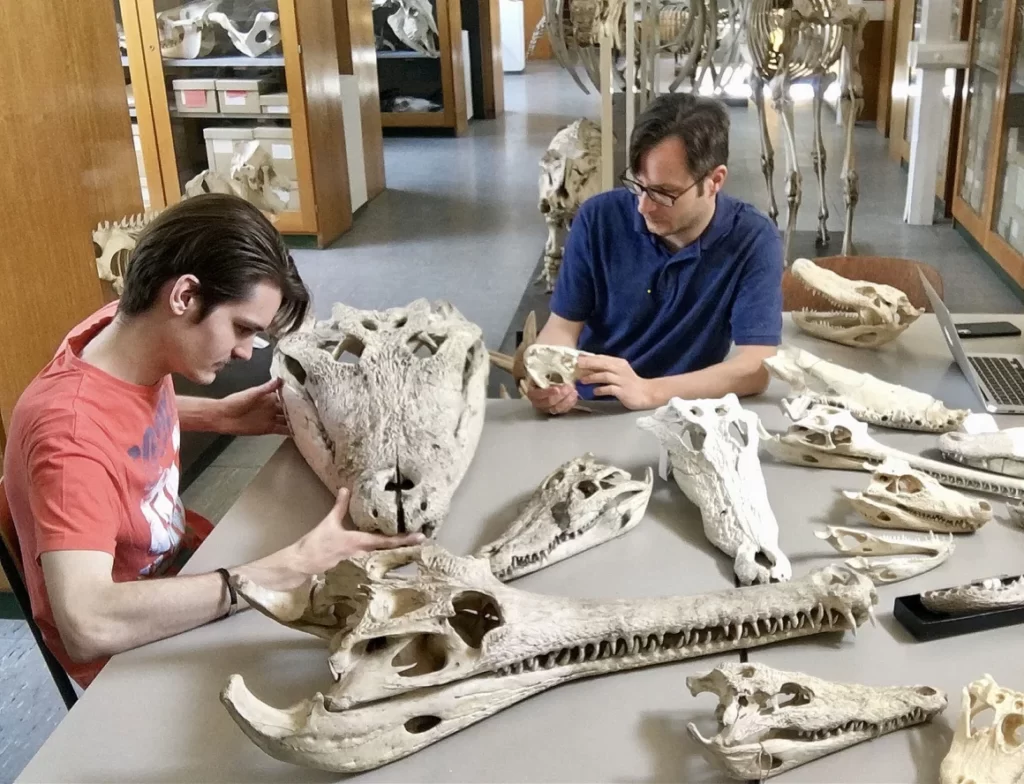A predator with a taste for dinosaurs
Tens of millions of years ago, an apex predator resembling a giant crocodile prowled the humid freshwater floodplains of southern Patagonia. This extinct hypercarnivore measured up to 11.5 feet (3.5 metres) long, weighed around 550 pounds (250 kilograms), and ate whatever it could catch- including dinosaurs.
Scientists near the southern tip of Argentina have now discovered a skeleton, complete with skull and jaws, of this fearsome animal. Named Kostensuchus atrox, it was identified as a new species of peirosaurid crocodyliform, an ancient relative of modern alligators and crocodiles.
The fossil, dating to around 70 million years ago at the end of the Cretaceous period, is the first crocodyliform found in Argentina’s Chorrillo Formation. Researchers say it is the most complete specimen of its kind ever unearthed.

Second-biggest predator in the region
K. atrox ranks as the second-largest extinct predator found in southern Patagonia and one of the largest of its group worldwide. “It is equivalent to a lion among felids,” said study lead author Dr Fernando Novas of the Félix de Azara Natural History Foundation in Buenos Aires.
The Chorrillo Formation where it was discovered once supported a rich ecosystem of dinosaurs, reptiles, amphibians, and even an early relative of the platypus. With its huge head, powerful jaws and serrated teeth, K. atrox could have hunted plant-eating dinosaurs and defended its kills against carnivorous theropods.

Finding this extinct hypercarnivore so far south expands the known range of peirosaurid crocodyliforms. Previously thought confined to warmer northern regions, the discovery shows they also lived in temperate habitats.
Teeth for puncturing and slicing
The skeleton was found in March 2020 during a dig for a large plant-eating dinosaur. Novas and his team were struck by its superb preservation: nearly complete, missing only the tail and some limb bones. The skull was so well preserved that enamel still coated its teeth.
Those teeth, pointed and serrated, were perfect for “puncturing and slicing through the flesh of sizable prey,” the study authors wrote. While more upright than modern crocodiles, its forelimbs suggest it may have lived a semiaquatic lifestyle.
“This fossil shows how crocodile relatives repeatedly evolved a croc-like look and lifestyle,” said paleontologist Dr Keegan Melstrom of the University of Central Oklahoma, who was not involved in the research. “They kept switching from terrestrial carnivores to semiaquatic predators through convergent evolution.”
Unlike modern crocodiles, K. atrox had forward-facing nostrils and eyes positioned on the sides of its skull, suggesting it searched for prey on land as well as in water.

Why hypercarnivores died out
Being a massive meat-eater helped K. atrox dominate its environment, but it may also have sealed its fate. Hypercarnivores- species whose diet is at least 70% meat- are thought to be more vulnerable in mass extinctions.
“Earlier this year I hypothesised that being a hypercarnivore made a group more likely to die off in a mass extinction than smaller, more generalist species,” Melstrom explained. “That appears to be what happened here.”
While K. atrox and other giant crocodyliforms vanished at the end of the Cretaceous, smaller crocodile lineages survived, likely thanks to varied diets and greater adaptability.

Secrets still hidden in the bones
Future studies aim to uncover more about this extinct hypercarnivore. Scientists hope to analyse isotope data from its teeth to learn about its diet and habitat, examine bone structure for growth patterns and age, and study abnormalities in its vertebrae with veterinary pathologists.
“The skeleton of Kostensuchus may reveal more secrets in the years to come,” Novas said.
Also read: Which came first: the chicken or the egg?
For more videos and updates, check out our YouTube channel.


